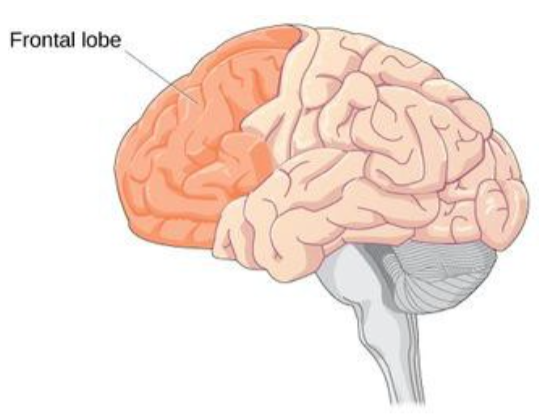7.1: Physical Development in Adolescence
- Page ID
- 70893
Puberty is the period of several years in which rapid physical growth and psychological changes occur, culminating in sexual maturity. The onset of puberty typically occurs at age 10 or 11 for females and at age 11 or 12 for males; females usually complete puberty by ages 15 to 17, while males usually finish around ages 16 to 17. Females tend to attain reproductive maturity about four years after the first physical changes of puberty appear. Males, however, accelerate more slowly but continue to grow for about six years after the first visible pubertal changes. While the sequence of physical changes in puberty is predictable, the onset and pace of puberty vary widely. Every person’s timetable for puberty is different. however the onset of puberty has been occurring earlier and earlier due to improved nutrition and environmental factors such as diet and exercise.
Hormonal Changes
Puberty involves distinctive physiological changes in an individual’s height, weight, body composition, and circulatory and respiratory systems. During this time, both the adrenal glands and the sex glands mature—processes known as adrenarche and gonadarche, respectively.
These changes are largely influenced by hormonal activity. Hormones play an organizational role (priming the body to behave in a certain way once puberty begins) and an activational role (triggering certain behavioral and physical changes). During puberty, the adolescent’s hormonal balance shifts strongly towards an adult state; the process is triggered by the pituitary gland, which secretes a surge of hormonal agents into the blood stream and initiates a chain reaction.
Sexual Maturation
It is this stage in life in which a child develops secondary sex characteristics. Primary sex characteristics are organs specifically needed for reproduction, like the uterus and ovaries in females and the testes in males. Secondary sex characteristics, on the other hand, are physical signs of sexual maturation that do not directly involve sex organs. In females, this includes development of breasts and widening of hips, while in males it includes development of facial hair and deepening of the voice. Both sexes experience development of pubic and underarm hair, as well as increased development of sweat glands.
The male and female gonads are activated by the surge of hormones, which puts them into a state of rapid growth and development. The testes primarily release testosterone, and the ovaries release estrogen; the production of these hormones increases gradually until sexual maturation is met. Girls experience menarche, the beginning of menstrual periods, usually around 12–13 years old, and boys experience spermarche, the first ejaculation, around 13–14 years old. Facial hair in males typically appears around age 14.
Physical Growth
The adolescent growth spurt is a rapid increase in an individual’s height and weight during puberty resulting from the simultaneous release of growth hormones, thyroid hormones, and androgens. Males experience their growth spurt about two years later than females. The accelerated growth in different body parts happens at different times, but for all adolescents it has a fairly regular sequence. The first places to grow are the extremities (head, hands, and feet), followed by the arms and legs, and later the torso and shoulders. This non‐uniform growth is one reason why an adolescent body may seem out of proportion. During puberty, bones become harder and more brittle.
Before puberty, there are nearly no differences between males and females in the distribution of fat and muscle. During puberty, males grow muscle much faster than females, and females experience a higher increase in body fat. The ratio between muscle and fat in post‐pubertal males is around 1:3, while for males it is about 5:4. An adolescent’s heart and lungs increase in both size and capacity during puberty; these changes contribute to increased strength and tolerance for exercise.
Brain Development
The adolescent brain also remains under development during this time. Adolescents often engage in increased risk‐taking behaviors and experience heightened emotions during puberty; this may be due to the fact that the frontal lobes of their brains—which are responsible for judgment, impulse control, and planning—are still maturing until early adulthood (Casey, Tottenham, Liston, & Durston, 2005).

Effects of Physical Development
Because rates of physical development vary so widely among teenagers, puberty can be a source of pride or embarrassment. Early maturing boys tend to be physically stronger, taller, and more athletic than their later maturing peers; this can contribute to differences in popularity among peers, which can in turn influence the teenager’s confidence. Some studies show that boys who mature earlier tend to be more popular and independent but are also at a greater risk for substance abuse and early sexual activity (Flannery, Rowe, & Gulley, 1993; Kaltiala‐Heino, Rimpela, Rissanen, & Rantanen, 2001). Early maturing girls may face increased teasing and sexual harassment related to their developing bodies, which can contribute to self‐consciousness and place them at a higher risk for anxiety, depression, substance abuse, and eating disorders (Ge, Conger, & Elder, 2001; Graber, Lewinsohn, Seeley, & Brooks‐Gunn, 1997; Striegel‐Moore & Cachelin, 1999). Girls and boys who develop more slowly than their peers may feel self‐ conscious about their lack of physical development; some research has found that negative feelings are particularly a problem for late maturing boys, who are at a higher risk for depression and conflict with parents (Graber et al., 1997) and more likely to be bullied (Pollack & Shuster, 2000).

